Preventing engine frost damage

Don’t risk engine frost damage: Andrew Pearce mulls over antifreeze and ways to test it.
As winter tightens its grip, conscientious operators think about antifreeze. Lifting the bonnet to make the check is one thing, but how do you know your tester won’t be telling pork pies?
Reliable readings matter, particularly with older, leaky machinery that may have been topped up with plain water over the summer.
You can pay less than a tenner or over £100 for an antifreeze tester.
They come in two flavours – hydrometers (which measure coolant density) and refractometers, which decide concentration by looking at the way the coolant transmits light.
Hydrometers are cheap and easy to come by, refractometers are relatively expensive, but have advantages – see Which to Choose?
Not all antifreezes are alike, either.
While most tractor and vehicle makers stick with traditional ethylene glycol-based products, some offer antifreeze which uses organic acid technology (OAT) additives.
OAT’s in your engine has more info.
Here’s the lowdown on five testers.
Three are hydrometers, representing the various designs you will come across; the other two are refractometers from different ends of the market.
While all performed well when measuring the freeze point of a typical 50-50 antifreeze – water solution, results were mixed elsewhere, see, simple test.
Measurement
- When testing antifreeze, sample from the radiator itself rather than a header tank, especially after adding fresh coolant mix.
- When using a hydrometer, check moving bit(s) are not affected by air bubbles and float freely.
- For reliable results, correct hydrometer reading for sample temperature.
- Zero a refractometer with distilled water before use.
- Allow sample to cool to ambient temperature before reading with refractometer.
General
- Use a 50-50 mix of antifreeze and water. This is simple to make up and gives protection to -37C. This concentration is excellent at carrying heat to the radiator (good news in summer) and maximises corrosion protection.
- Don’t use tap water, as minerals in it can precipitate out to block radiator tubes and limit heat transfer. Go for distilled, demineralised or de-ionised water.
- Stay below 60% antifreeze in the mix: More is NOT better.
- Keep radiators topped up. Steam formed in air spaces is particularly corrosive.
- Top up with 50-50 antifreeze mix, not water, to maintain coolant performance.
- Do not mix antifreeze types.
- Use quality antifreeze to engine maker’s specification, ideally confirming to BS6580:1992.
- Do not reuse old coolant. Its additive package will be depleted, risking quick corrosion of new parts like a water pump impeller.
- Change coolant at the intervals specified by the engine manufacturer.
SEALEY AK4120
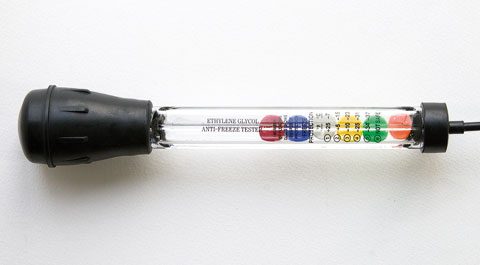
Type Floating disc hydrometer Size (mm) 275 x 55 Temperature compensated No Displays result as Coolant freeze point Also measures N/a Cost £12.45 ex VAT Supplier Sealey Power Products 01284 757500 Power Farming VerdictSix floating discs show freeze point, claims accuracy with hot or cold coolant.
Reading affected by bubbles unless coolant is drawn in very carefully.
Interpretation can be difficult when discs part-float.
Build quality poor sample tube came off, suction bulb leaded when expelling liquid quickly.
SEALEY AK409
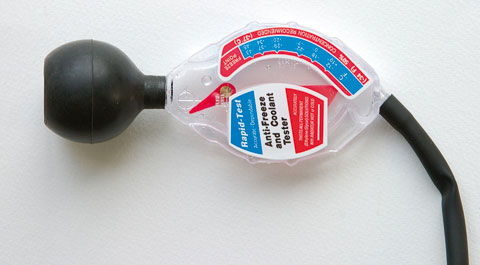
Type Foating pointer hydrometer Size (mm) 165 x 70 Temperature compensated No Displays result as Coolant freeze point Also measures Coolant boiling point Cost £4.95 ex VAT Supplier Sealey Power Products 01284 757500 Power Farming VerdictFloating pointer shows freeze/boil point, claims accuracy with hot or cold coolant.
No scale graduation below -12C, short sample tube needs to be extended with some rads.
Fiddly to use; must be held upright and filled to correct level.
Build quality good.
SYKES-PICKA-VANT 03200
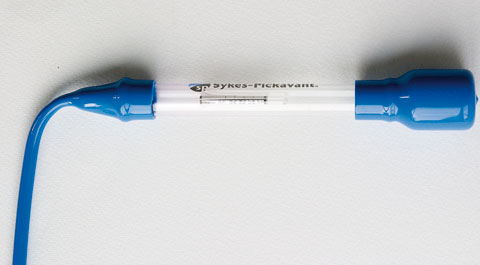
Type Floating BULB hydrometer Size (mm) 200 x 35 Temperature compensated No Displays result as Coolant freeze point Also measures N/A Cost £7.13 inc VAT Supplier ShackTools 0845 009 4082 Power Farming VerdictFloating glass bulb shows freeze point of ethylene glycol only.
Well-made bulb draws in right quantity of liquid, instructions sensibly specify coolant should be at 20C for accurate result.
Fast to use, unambiguous readings from cramped scale.
CONCEPT OLD FORGE
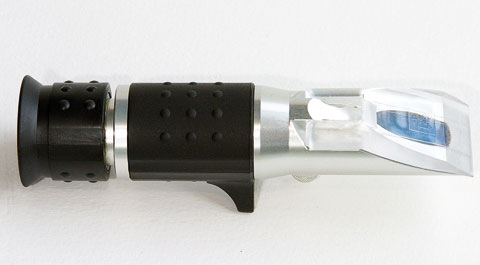
Type Refractometer Size (mm) 160 x 25 Temperature compensated During calibration Displays result as Coolant freeze point Also measures Propylene glycol antifreeze, battery electrolyte for state of charge), screenwash Cost £49.90 plus VAT Supplier Concept Tools 01246 206866 Power Farming VerdictFeels solid, detailing so-so.
Screen less bright than Eclipse, focus ring easy to knock. Calibration needs tiny screwdriver supplied – fiddly.
Optics less sharp than Eclipse, so reading slightly more ambiguous; big sample platform harder to load evenly.
But accurate performer and comes with range of accessories.
B + S ECLIPSE
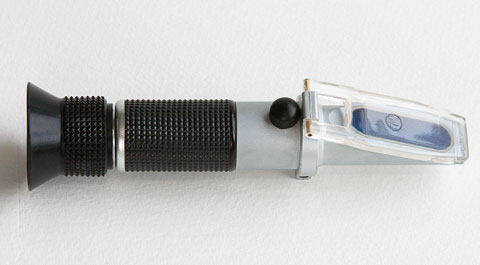
Type Refractometer Size (mm) 157 x 35 Temperature compensated During calibration Displays result as Coolant freeze point Also measures Propylene glycol antifreeze, battery electrolyte for state of charge) Cost £120 (internet) plus VAT Supplier Bellingham and Stanley 01892 500400 Power Farming VerdictAccurate, high-quality instrument made in UK.
Sealed against fluids.
Sample easy to load, unambiguous readings from clear screen.
Zero adjustment simple, by hand. Carries serial number, can be serviced/recalibrated by makers.
Expensive, no extras, but should last a lifetime.
Conventional antifreeze contains about 95% ethylene glycol to lower water’s freeze point, and 3%-5% corrosion-inhibiting additives.
To extend service life to three years and beyond, additive packs based on organic acids (organic acid technology, or OAT) were introduced.
These do the job, but don’t resist pitting so well and can attack engine seals, so some silicate has been added.
The resulting hybrid is shortened to HOAT.
- Can you tell which type is which by colour? Not really. Conventional antifreezes tend to be dyed blue or green, OATs and HOATs orange, pink or yellow, but there is much variation.
- Should you mix types? Preferably not. Although your cooling system won’t disintegrate, adding conventional antifreeze to OATs or HOATs progressively pegs back the mix’s service life. If the engine came filled with OAT antifreeze from the factory, stick with it. If you change, flush the system thoroughly.
With hydrometers available for a few quid and refractometers starting at £50, price along will be the decider for many.
But wait a good refractometer has a lot going for it, particularly in a professional workshop.
Here’s a quick comparison.
| Hydrometer | Refractometer | |
|---|---|---|
| Size | Variable | Small |
| Material | Glass or plastic | Metals, plastic |
| Sample size | Large | Very small |
| Readability | Variable | Potentially excellent |
| Cost | Cheap | Expensive |
| Durability | Variable | Good |
| Ease of use | Simple | More complicated |
| Risk of error | High | Low |
| Able to measure | One material | Several material |
Each tester’s accuracy was check by sampling known-concentration solutions (10% and 50% antifreeze by volume) of two antifreeze types, ethylene glycol and OAT.
Measure freeze points were:
| Ethylene glycol | OAT | |||
|---|---|---|---|---|
| Concentration of (by volume) | 10% | 50% | 10% | 50% |
| True freeze point (c) | -3 | -37 | -4 | -34 to -37* |
| Hydrometers | ||||
| Sealey AK4120 | -7 | -37 | -7 | -23 |
| Sealey AK409 | -7 | -35 | 0 | -26 |
| Sykes 03200 | -5 | -33 | -5 | -32 |
| Refractometers | ||||
| Concept OF89031 | -4 | -38 | -4 | -34 |
| B+S Eclipse | -4 | -37 | -4 | -37 |
* Depends on brand

